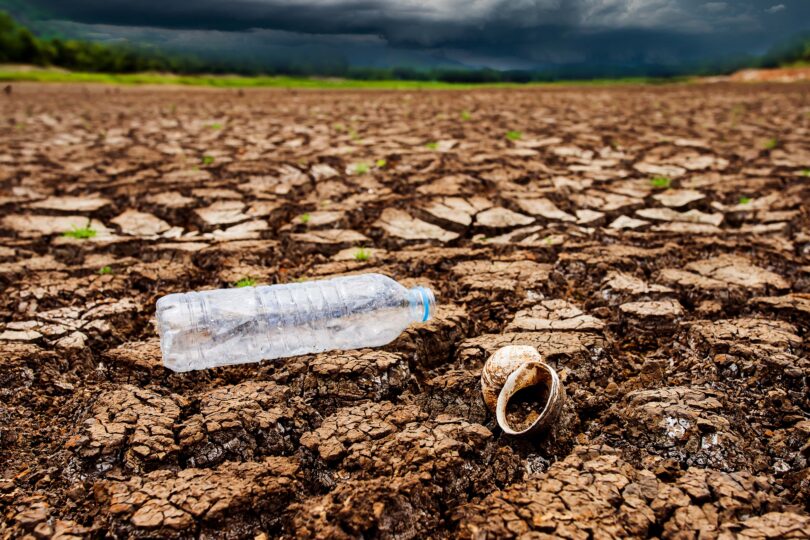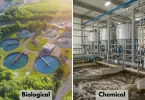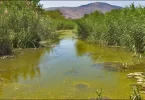Flash drought is a relatively recent term in climate science that refers to a rapid-onset drought that occurs in days to weeks rather than the months or years that a regular drought takes to develop. Due to their suddenness, flash droughts can inflict substantial harm on agriculture, water resources, and ecosystems, frequently catching people and governments off guard. As the climate changes, flash droughts may become more common and severe. Understanding how these droughts form and unfold is critical to improving predictions and safeguarding resources in an era of increasing extremes.
What is a Flash Drought?
The term “flash drought” refers to a form of drought characterized by speed and severity. Unlike typical droughts, which develop gradually over time owing to extended periods of below-average rainfall, flash droughts occur suddenly, frequently due to a combination of conditions such as excessive heat, high evaporation rates, and little precipitation.
Flash drought meaning refers to a rapidly intensifying drought event. Unlike most droughts, which develop gradually over months or even years, a flash drought materializes quickly, sometimes in just a few weeks.
Flash droughts are dangerous because they can sneak up on us and intensify before we have time to react. When we realize conditions have deteriorated, the damage may already be done.
Common effects of flash drought include:
- Wilting and drying out of crops as the shallow soil layer dries up.
- Increased wildfire risk as vegetation dies off.
- Diminished water levels in reservoirs, streams, and aquifers.
- Harm to wildlife and livestock due to lack of food and water.
Flash drought vs. Normal drought
Flash droughts differ from traditional droughts in several key ways:
- Speed of onset. Flash droughts develop rapidly over weeks to months, while traditional droughts emerge gradually over months to years. The abrupt onset of flash droughts means ecosystems have little time to adapt, and the effects can be severe.
- Shorter duration. Flash droughts are temporary, lasting less than six months. Conventional droughts persist for at least a year, often much longer. While the impacts may be intense, flash droughts end quickly as the weather pattern that caused them moves on.
- Less predictable. Flash droughts are difficult to forecast more than a few weeks in advance. They are linked to sudden changes in atmospheric circulation and weather patterns. Traditional droughts are connected to longer-term climate cycles and are often foreseeable months ahead, allowing for some degree of preparation.
- Localised impact. Flash droughts affect specific regions or locales rather than widespread areas. They are associated with anomalies in the location and timing of weather systems. In contrast, most significant droughts influence large portions of a country or continent simultaneously due to factors like La Niña.
| Aspect | Flash Drought | Normal Drought |
| Onset Time | Days to weeks | Months to years |
| Causes | Sudden heatwaves, evaporation, low rainfall | Prolonged low rainfall |
| Impact | Immediate and severe on crops, water supply | Gradual but long-lasting effects |
| Predictability | Harder to predict | Easier to monitor and forecast |
How Do Flash Droughts Form?
Flash droughts, also known as drought intensification events, are short periods of rapid onset or intensification of drought conditions. They are characterized by a quick shift from normal or wet conditions to severe drought. Flash droughts can emerge within just a few weeks and are difficult to predict, representing a challenge for water resource management.
The Causes and Conditions That Lead to Flash Droughts
Several factors contribute to the development of flash droughts:
Lack of precipitation
A sustained period of little to no rainfall or snowfall is the most apparent cause of flash drought. When an area experiences weeks of dry weather when rain or snow is usually expected, soil moisture depletes rapidly. Plants and crops are unable to uptake water, leading to drought stress.
High temperatures
Higher-than-average temperatures, especially over an extended period, can accelerate soil moisture depletion through increased evaporation and plant transpiration. The atmosphere can hold more water vapor as temperatures rise, creating a higher evapotranspiration demand. This further dries out the land surface, enhancing drought intensification.
Wind
Strong, dry winds sap moisture from plants and the soil surface through evaporation. As winds move over an area, they carry away water vapor, depleting soil moisture reserves. Dry, hot winds are particularly damaging, as they substantially increase the evapotranspiration rate.
Soil conditions
Certain soil types, such as sandy soils, have a low water-holding capacity, so they dry out more quickly during periods of little precipitation. As the soil dries out, its ability to absorb and retain any rainfall that does occur also diminishes. This creates a feedback loop where increasingly dry soils worsen drought conditions.
Flash droughts can devastate agriculture, water resources, and ecosystems. By understanding the factors contributing to their development, we can improve monitoring and prediction to help mitigate their effects. Flash droughts may become more frequent and intense with climate change, so developing resilience against them is crucial.
Why do Flash Droughts Matter?
Flash droughts are especially harmful due to their sudden start and devastating consequences, leaving little time for preparation. They are particularly concerned for the following reasons:
- Agricultural Impact: Lack of moisture can cause crops to wither and diminish yields, resulting in economic losses for farmers.
- Water Supply Stress: Flash droughts degrade reservoirs, rivers, and groundwater sources, leading to water shortages for cities and enterprises.
- Ecosystem Disruption: Rapid moisture loss can harm vegetation and wildlife, leading to ecological disruption and biodiversity loss.
- Wildfire Risk: Dry conditions from flash droughts enhance the risk of wildfires, threatening property, forests, and air quality.
Strategies for Predicting and Preparing for Flash Droughts
As flash droughts intensify in frequency and severity, strategies for predicting and preparing for them become increasingly important. Scientists are exploring several approaches to anticipate flash drought events better and mitigate their impacts.
Satellite monitoring
Regular satellite monitoring of vegetation health and soil moisture provides critical data for identifying areas at risk of rapid-onset drought. By tracking vegetation indices that measure plant greenness and water content, scientists can detect early signs of drought stress before impacts become severe. These monitoring systems enable earlier drought warnings and allow water managers and farmers to take proactive measures.
Advanced weather prediction models
Weather forecast models incorporating information on soil moisture, vegetation, and other land surface conditions offer improved flash drought development and evolution prediction. As these land-atmosphere feedback models continue to advance, scientists expect significantly enhanced forecast skills for flash drought events a few weeks in advance. Access to these state-of-the-art weather models helps water resource managers anticipate and prepare for possible drought scenarios.
Drought information systems
Integrated drought information systems that combine monitoring, forecasting, and decision-support tools help coordinate data and predictions from various sources. These systems translate information into actionable insights that aid drought management and response. For example, the U.S. Drought Monitor incorporates multiple indicators and indices to determine the drought’s location, intensity, and duration each week. Similar systems at local and regional levels provide critical information to help communities plan for and mitigate the effects of flash droughts and other rapid-onset events.
Developing Sustainable Agriculture
Agriculture is frequently the hardest hit by flash droughts. Preparing crops and farmers involves creating and planting varieties that can withstand heat and water stress.
Crop Diversification
Encouraging farmers to produce various crops to prevent economic losses. Techniques include mulching, no-till farming, and cover cropping to conserve soil moisture.
Ecosystem restoration
Healthy ecosystems serve as natural buffers against the consequences of flash droughts. Strategies include Afforestation and reforestation, which involve planting trees to increase water retention and soil erosion. Wetland protection involves preserving wetlands to store water and support biodiversity, ensuring that ecosystems are resilient to drought-induced pressures.
Flash Drought Examples
- In 2012, the United States Midwest experienced a well-documented flash drought, which led to crop failures and considerable economic losses.
- In 2019, a sudden drought in Australia severely affected cattle farming and water supply.
- In 2022, excessive temperatures caused a flash drought in southern China, drying rivers and hurting hydropower generation.
Conclusion
As you have learned, flash droughts can emerge rapidly and have devastating consequences. Flash droughts are an emerging and serious environmental challenge in a warming world. Their rapid onset, severe impacts, and unpredictability highlight the need for improved understanding and proactive measures to mitigate their effects. Recognizing the signs and understanding the factors that lead to flash droughts will be essential for safeguarding water supplies, agriculture, and ecosystems.
FAQs
1- Why are flash droughts dangerous?
Flash droughts are dangerous because they leave little time for preparation. They can cause immediate crop failures, water shortages, and increased wildfire risks.
2- How does climate change influence flash droughts?
Climate change increases the likelihood of flash droughts by causing more frequent heatwaves, erratic rainfall patterns, and overall global warming.
3- Can flash droughts be predicted?
Flash droughts are more complicated to predict than regular droughts, but meteorological tools and satellite data advancements are improving early detection capabilities.










